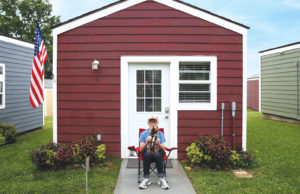A concerted effort to improve equity in Boulder Valley
schools is stalled halfway through a five-year program aimed at ensuring all
students succeed.
The Boulder Valley School District’s most recent annual
report indicates a gap still exists between white and Hispanic students on
standardized tests, the measure typically used by parents and others to
evaluate educational success.
The yearly Colorado Student Assessment Program, or CSAP,
results shed light on a persisting racial and ethnic gap among Boulder Valley
school children. Officials and educators realize these test scores have been a
driving force in the white migration out of lower-scoring schools into those
with the highest scores.
This has raised concern in a community associated with an
appreciation of diversity and inclusion. The contradiction has been evident to
Boulder Valley School Board Member Lesley Smith.
“I think people think that they are a lot more hip to
diversity than they really are,” said Smith.
Controversial to say the least, assessment scores serve as
a compass for navigating the local stratification phenomena. At the core, the
data involves complicated issues of dueling community ideals: diversity and
choice.
The raw data
The Boulder Valley School District consistently ranks
above state averages on test scores. In 2009, the state average for third-grade
students who tested at the unsatisfactory level in reading was 8.73 percent,
while BVSD’s district average was 4.54 percent.
However, when performance is broken down by ethnicity at
the district level, only 2.09 percent of Boulder Valley white children scored
unsatisfactory, while 21.31 percent of their Hispanic peers fell within this category.
On the state level this disparity is not the case. The
racial gap is considerably narrower in Jefferson County, the school district
immediately south of BVSD. Its unsatisfactory levels are 3.66 percent for white
children, and 9.23 percent for Hispanic children.
The heart of the issue is that the majority of these
unsatisfactory scores are not actually district wide; almost all are coming
from certain elementary schools. There is a strong correlation between the
percentage of minority students and the percentage of lower test scores within
a school.
University of Colorado’s Kenneth Howe is a professor of
education and the director of the Education and the Public Interest Center. He
considers one reason for the racial stratification to be the overall higher
socioeconomic status of Boulder’s white population.
“They can afford transportation (to schools farther from
their homes), they’ve got time to look into things, they’re less trusting of
school officials, and they’re just more aggressive in general,” said Howe.
{::PAGEBREAK::}
The “parent ethic” of school choice
According to Howe, the open enrollment policy has existed
in BVSD since 1961 but didn’t really embed itself within Boulder Valley until
the mid-1990s. Since then, the racial stratification has increased through the
social phenomenon known as “white flight.”
“What [open enrollment] has done in Boulder Valley is just
make it easy for people to flee their school,” said Howe. “They don’t even have
to move, just drive them across town.”
Howe doesn’t blame parents for wanting their children to
receive a good education, but he sees some detrimental impacts when it is taken
too far.
“I think there is this ethic among parents of ‘I’m going
to make this extreme sort of effort on behalf of my child,’ ” said Howe. “And they’re
not going to sacrifice their [child’s] benefit for some of the other kids’
benefits.
“But then that gets complicated, too. You have parents who
really aren’t that comfortable with or don’t support the school choice system,”
said Howe. “But they think their child will be sacrificed by them choosing what
they consider an inferior school.”
Bethann Meyers is both a second-grade reading teacher at
Foothill Elementary and a parent who has grappled with school choice herself.
“I always thought my kids would go to the neighborhood
school … because I like the community aspect,” said Meyers, “but then when I
started looking at schools … I ran across Friends’ School, which had two
teachers for every 18 kids.”
Meyers changed her mind when she realized her kids would
get more attention and connection with the teacher.
“And then at that point, this community emphasis, which
before I thought was really important to me, wasn’t as important,” said Meyers.
For Meyers, class size led her to Friends’ School, but it
isn’t a statistically viable reason for all white parents to necessarily leave
their neighborhood schools.
Columbine Elementary had the highest minority population
in the fall of 2008, at 88.5 percent, but also some of the smallest class
sizes. Still, this school has seen some of the highest out-migration rates in
the district.
Contrary to trends of her fellow white parents, Trish Wood
has opted for her kids to attend their neighborhood school, Columbine.
“If you do the research and look at everything that there
is to achievement, both socially and academically, the number one factor … is
class size,” said Wood. “So for me that was a simple thing. I knew my kids
would get attention, whether they were accelerated, or average, or below
average.”
‘It’s not the easiest’
Alarmed by these trends, BVSD created the Stratification
Task Force in 2005. Its study resulted in the district’s adoption of a
five-year plan.
Smith, a CU science professor, initially became interested
in the Boulder Valley School Board because of the district’s segregating
trends. Since her election to the board, she has actively been involved at each
step it has taken toward destratifying the district.
While gains are being made in achievement and climate,
Smith expressed frustration in consistently falling short of their yearly
equity goals.
“We’ve put in goals, the first board that’s put in
measurable goals, on achievement that, you know, we need to hit these
benchmarks in five years, and we’re not hitting them,” said Smith. “And we just
keep pushing.
“As we’re finding out, it’s not the easiest.”
Smith highlighted some specific actions that the school
board has taken:
Increased money for second-language learning programs
in more schools.
Redrew school boundaries to balance the demographics.
Revised fundraising policies to benefit schools with
lower-income families.
Included issues on its 2009 legislative platform that
would support BVSD’s destratification efforts.
Howe, who has done extensive research on Boulder Valley’s
open enrollment policy, says its complications require a more direct approach.
“If you just keep trying to manipulate all these things to
make this work without having any rules … I just don’t see how it is going to
work,” said Howe.
{::PAGEBREAK::}
‘Achievement’ vs. ‘growth’
While assessment is important, the impact and implications
of these results run deeper than simply the point value assigned to any
particular school or demographic group.
When looking strictly at CSAP scores, a school with lower
scores implies to many people a lower quality education, said Smith. However,
many other variables contribute to a school’s achievement. To highlight this
point, Smith notes that the white students at Columbine are actually attaining
high marks, despite the school’s overall low scores.
“They are way above our average white kids as far as what
they’re doing on the CSAPs, because their classrooms are like 10 [students],
when you take out all the other kids for ESL or whatever,” said Smith.
Many educators and officials believe the CSAP structure
contains fundamental inequity.
“It is not a good system for English language learners
because they’re being assessed in a second language and then being expected to
make progress,” said Meyers, who teaches second-grade reading.
The progress she referred to is a movement away from
looking strictly at test scores as the only achievement indicator to one that
encompasses a school’s improvement over time. The Colorado Department of
Education calls this a Growth Model Plan, and the Boulder Valley School Board
has begun orienting its measurements this way.
While this model may take more factors into consideration,
Meyers says it is not flawless.
“I still don’t think it is a level playing field,” said
Meyers, “because if you’re learning two languages, that progress is not going
to be as quick as a student who has grown up just learning English.”
Jonathan Dings is the chief of planning and assessment for
the Boulder Valley School District. He sees the value, as well as the problems,
with both approaches.
“I think it is worth looking at how high the students
achieve, but what you risk in looking too much at that is if you get a
different group of kids one year [that really affects the data],” said Dings.
“It makes sense to me to think about how effective a school is at increasing
its academic performances, compared to where it started at.”
It’s complicated
“The idea of trying to remedy this gets very difficult,”
said Howe.
With strong opinions on all sides and little evidence of
change, the equity efforts in Boulder Valley appear stalled. However, Howe said
it is still worth pursuing.
“There is a civic lesson here. If people are going to
engage in a multicultural society … they need to learn how to live with one
another. It seems to me that school is one place where that can happen and be
facilitated.
“It turns out that people who are integrated early on tend
to have much more heavily integrated lives later than folks who are sort of
isolated themselves,” said Howe.














